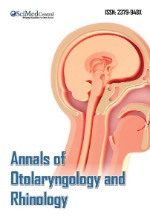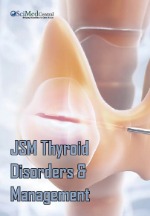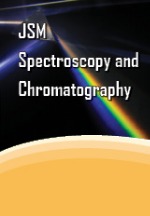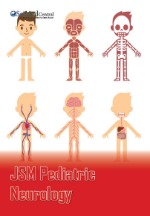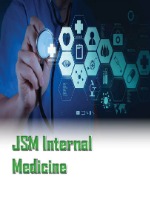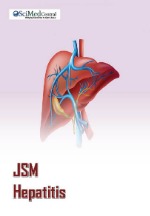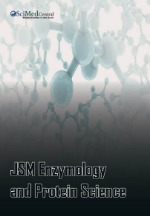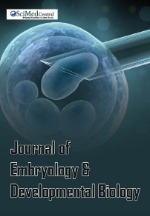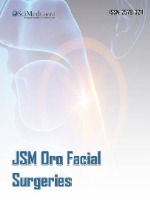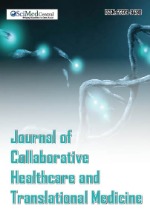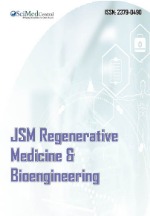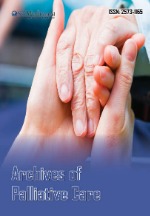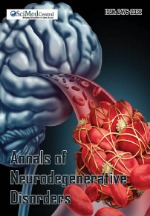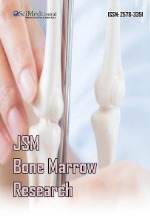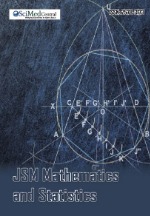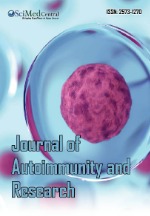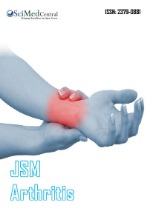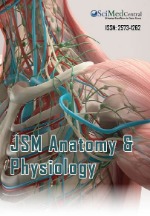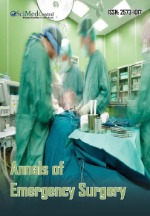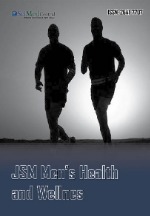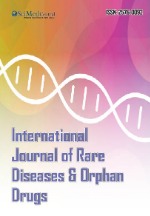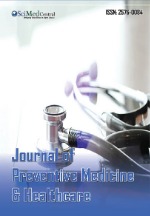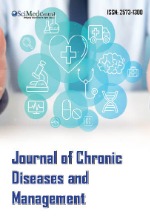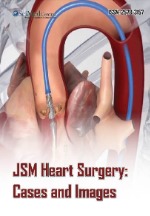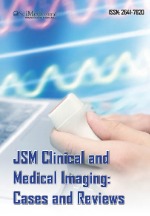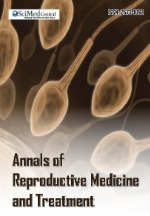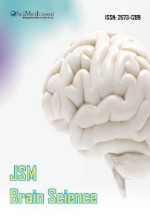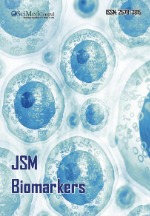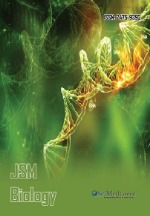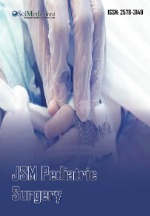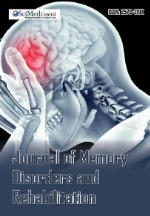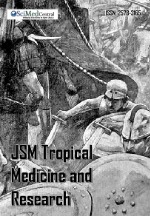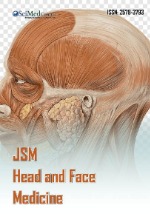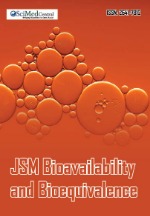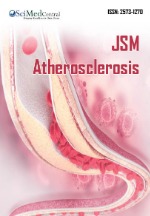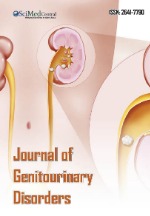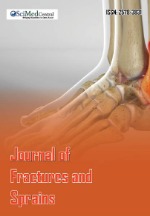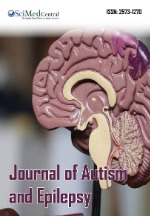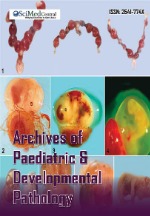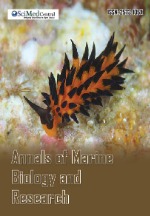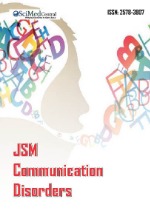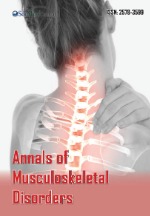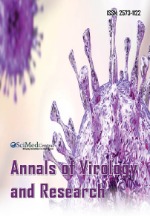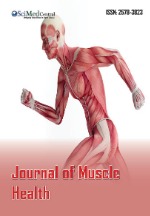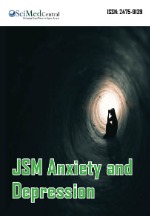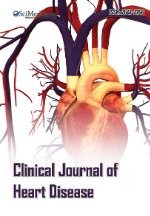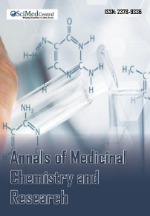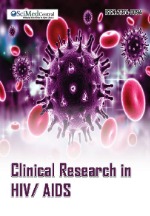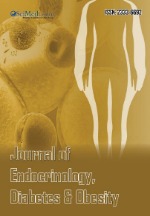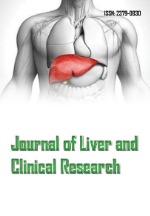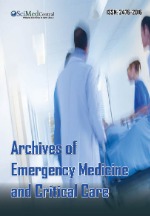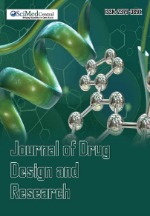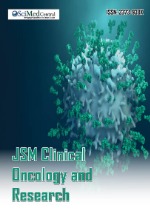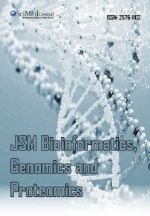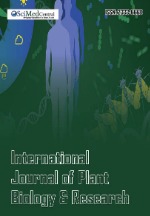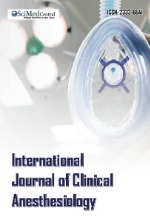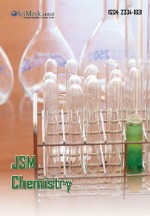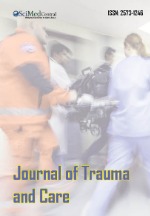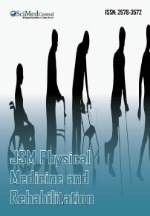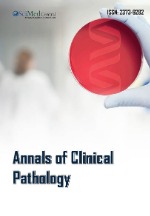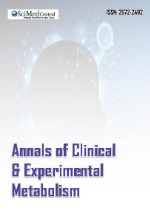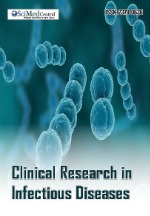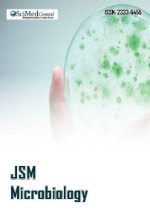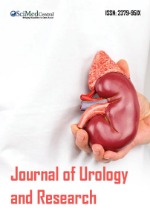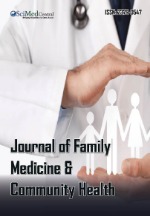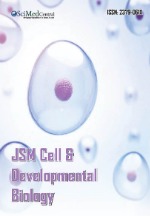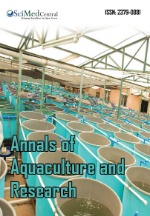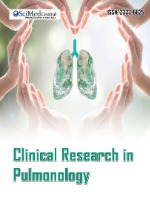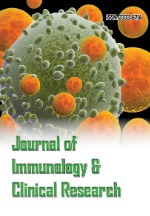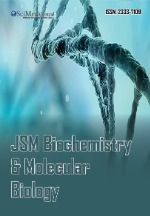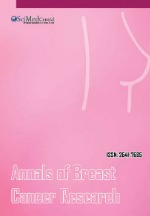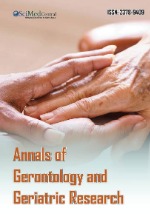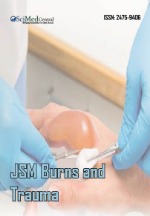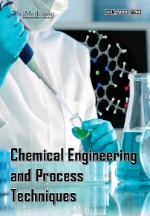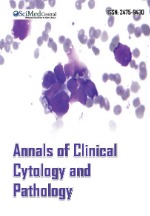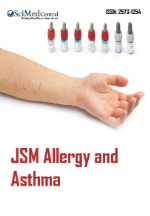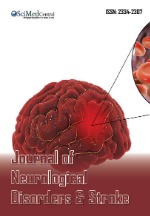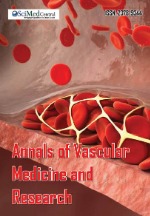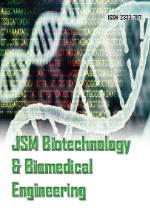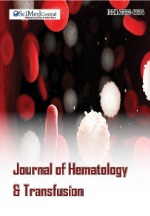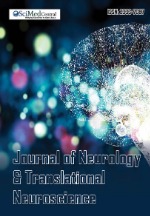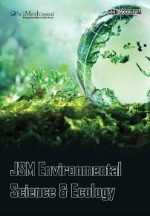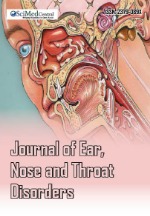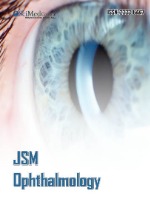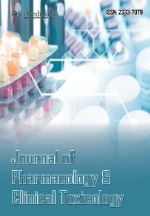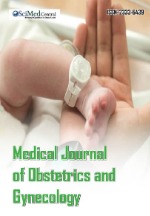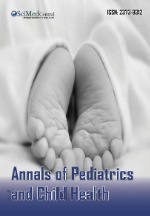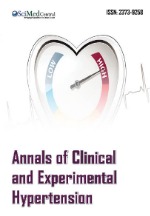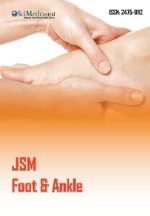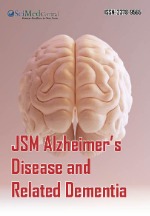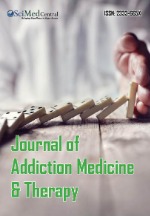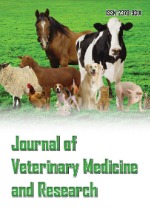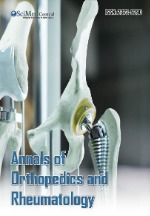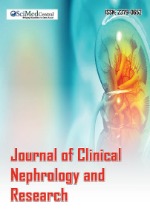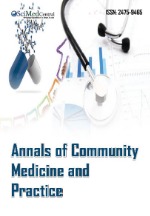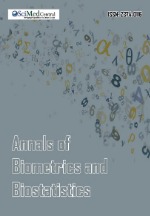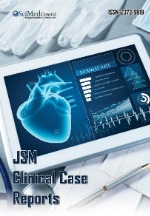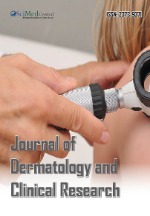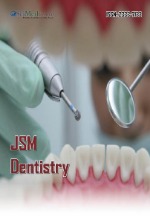Strongyloides Stercoralis Hyperinfection Syndrome - Review Article
- 1. Department of Internal Medicine, Universidad El Bosque, Colombia
Abstract
Strongyloidiasis is a disease caused by Strongyloides stercoralis, is an endemic nematode in countries with a tropical and subtropical climate, sometimes the infection is asymptomatic but in other cases it can produce a hyperinfection syndrome, Which is characteristic of many more severe symptoms, such as severe respiratory distress, coughing up blood, events that can lead the person to be critically ill, the risk factors for this syndrome are: immunosuppression in general either due to HIV, transplantation, use of drugs, oncological diseases. Normally in the infection that is not so severe, anthelmintics such as albendazole can be used, but in severe cases there are studies with subcutaneous ivermectin in cases in which it cannot be administered orally or that simply has not worked.
Keywords
• Strongyloidiasis; Strongyloides stercoralis; Hyperinfection syndrome
Citation
Hennessey DC, Velásquez LW, Serna JSE (2024) Strongyloides Stercoralis Hyperinfection Syndrome - Review Article. JSM Gastroenterol Hepatol 11(1): 1128.
INTRODUCTION
Strongyloidiasis is a disease caused by the nematode S. stercoralis that is endemic in rural regions of tropical and subtropical countries [1]. S. stercoralis is an intestinal helminth that infects humans through contact with soil containing the larvae [2].
Epidemiology
Its prevalence is unknown, but it is estimated that it affects between 10 and 40% of the world population, reaching up to 60% in populations of low socioeconomic status, especially those engaged in agriculture [3]. According to the study by Puthiyakunnon et al., the countries with the highest prevalence are Namibia, Papua New Guinea, Gabon and Kenya [4]. As for Latin America, according to the study by Buonfrate et al., the prevalence in Chile, Bolivia, Colombia and Mexico is 5% and, in Argentina, Ecuador and Venezuela, 20% [5].
The lifecycle of strongyloides
The S. estercolaris live in rural areas where there is no good sanitation, which generates contaminated soils. And the direct infection starts when the filariform larvae penetrate the skin through the feet [2]. Then the larva reaches a capillary and travels through the bloodstream to the heart, reaches the lungs, enters through the alveoli and ascends throughout the bronchial tree to mature larva. This reaches a larger size and migrates to the trachea, reaches the pharynx and is swallowed until reaching the small intestine, where it is in the intestinal submucosa, to mature into the adult female parasite. This parasitic female reproduces asexually and release eggs into the gastrointestinal tract. The eggs then hatch into non-infectious rhabditiform larvae which comes out into the intestinal lumen and is the parasitic form that generally is eliminated in the stool [6].
Outside the human, the larva has two options, one of returning to the ground and transforming into the filariform larvae, which is one of the infectious forms and is ready to infect other hosts and start a new cycle, the other possibility is to reproduce sexually and produce eggs from which rhabditiform larvae hatch that mature into filariform larvae also infecting a new host, in an indirect life cycle [2].
This parasite also can reinfect the host through the gastrointestinal wall, where rhabditiform larvae transform into filariform larvae in a process known as internal autoinfection or they may have an external autoinfection process where they arrive a year where they also transform in filariform larvae that invade the perianal region to continue the life cycle [6].
Key to the persistence of strongyloides infection
S. stercoralis can reinfect the host through the wall of the gastrointestinal tract. This is called autoinfection and occurs when some of the rhabditiform larvae in the faeces transform into infectious filariform larvae in the host’s gastrointestinal tract. These larvae then penetrate the gut wall and re-enter the circulation back to the lungs to begin the cycle again [7]. This cycle of autoinfection occurs more frequently in hosts with some degree of immunosuppression [1].
Risk factors of Hiperinfection Syndrome
The most important are Immunosuppression due to medications such as corticosteroids, Hematologic malignancies (especially Lymphoma), Tuberculosis, Solid organ or bone marrow transplantation, Patients infected with human T-cell lymphotrophic virus type 1, Malnutrition, in this patient The migration of infective larvae, can reach a mortality of 100% [7].
CLINIC PRESENTATION
Most people with strongyloidiasis have no symptoms, some have abdominal pain and tenderness, diarrhea, nausea, and vomiting, they may lose their appetite, also can have Cough and wheels [8]. When is a severe infection the symptoms are more severe, shortness of breath and coughing up blood and the Gastrointestinal symptoms include Intestinal obstruction, Bleeding, Severe difficulties in absorbing nutrients (malabsorption). Other organs can also be infected, those affected may have inflammation of the tissues that line the brain and spinal cord (meningitis), a brain abscess, or hepatitis [9].
DIAGNOSIS
In hyperinfection syndrome, large numbers of larvae usually appear in feces or other body fluids. In immunocompromised or clinically suspected patients, a search for the parasite should be performed. Among the laboratory tools for the diagnosis of strongyloidiasis we have stool tests and serological studies.
Stool analysis
Direct microscopic analysis of feces is performed identifying Strongyloides stercolaris larvae. It has a relatively low sensitivity (<50%) [10].since the parasite load is generally low and larval shedding is usually intermittent. The Ritchie technique can also be performed or concentration by centrifugation can improve the sensitivity in detecting the parasite [8].
Other techniques used to improve the detection of the parasite in feces are the Baerman concentration technique and agar plate culture. The Baerman’s technique consists of the biological concentration of the larvae through thermotropism and hydrotropism, where the stool sample is exposed to water with a temperature between 37°C and 40°C, producing migration of the larvae. The sensitivity of this method can reach 72%, with a specificity of up to 100%. The agar plate culture has better sensitivity than the Baerman technique in detecting the parasite, which can reach 89% [10]. Using this technique, a stool sample is placed on an agar plate which is incubated at 37°C. the present larvae will move on the plate spreading the bacteria attached to their body, creating bacterial growth patterns that will demarcate the larval trail [11]. The increased number of stool samples processed can improve the sensitivity of the test, reaching even 100% when studying up to 7 samples [12].
The Strongyloides nucleic acid amplification test in feces by means of PCR, can improve the specificity in the diagnosis, being superior to the parasitological methods. A study compared the performance of animated PCR and real-time PCR, finding a specificity and sensitivity of 100% and 91.6% respectively for animated PCR and for real-time PCR of 84.7% and 95.8% respectively [13].
Serological tests include enzyme-linked immunosorbent assays (ELISA), indirect immunofluorescence microscopy (IFI), and gelatin particle agglutination and immunoblotting. These tests have a high negative predictive value, which can exclude infection by S. stercolaris. Sensitivity up to 89% and specificity d up to 97% have been reported [14].
TREATMENT
In the infection of the strongyloidiasis the treatment is based on the administration of anthelmintics, ivermectin has consistently been shown to be the drug of choice to achieve parasitological cure, the recommended dose is 200 µg / kg of body weight in a single dose for 2 days with this dose a cure rate of 100% is achieved, with few side effects are reported [15]. Without forgetting other options such as albendazole, this drug has a broad anthelmintic spectrum and has been used at doses of 400 to 800 mg / day for 3 to 6 days and cure rates have been achieved that exceed 75% of cases, and in immunosuppressed patients the dose and administration time should be doubled [15]. The other anthelmintic is the thiabendazole the recommended dose is 25 mg / kg / day distributed every 8 hours and for 5 to 7 days with which 90% efficiency is reported. In cases of hyperinfection the dose should be doubled and extended for 10 days [15].The thiabendazole is highly toxic and commonly reported adverse reactions include dizziness, nausea, vomiting, headache, abdominal pain, and diarrhea [16].
We must remember that when the patient has the hyperinfection syndrome the treatment should last at least 7 days when ivermectin is not used. In the world there is no ivermectin in parenteral presentation for use in humans, and it’s difficult in those patients with intestinal obstruction or other problems of enteric absorption [17]. So there are some cases with the use of bovine presentation, in 2000 it was the first case report of the use of subcutaneous ivermectin in a patient with HTLV-1-associated lymphoma and a diagnosis of Strongyloides sp. Hyperinfection and achieved the cure [18].
REFERENCES
- Hernandez-Chavarria F. Strongyloides stercoralis: un parasito subestimado.Parasitol. 2001; 25: 1-2.
- Daniel G, Coggle S, Pollard C, Aliyu SH, Moore EM. Strongyloides stercoralis infection. BMJ. 2013; 347: 4610.
- Polanco L, Gutiérrez L, Cardona Arias J. Diagnosis of Strongyloides Stercoralis infection: Meta-analysis on evaluation of conventional parasitological methods (1980-2013). Rev Esp Salud Publica. 2014; 88: 581-600.
- Puthiyakunnon S, Boddu S, Li Y, Zhou X, Wang C, Li J, et al. Strongyloidiasis--an insight into its global prevalence and management. PLoS Negl Trop Dis. 2014; 8: 3018.
- Buonfrate D, Mena MA, Angheben A, Requena-Méndez A, Munoz J, Gobbi F, et al. Prevalence of strongyloidiasis in Latin America: a systematic review of the literature. Epidemiol Infect. 2015; 143: 452- 460.
- Castro Carolina H .Strongyloides stercoralis: un geohelminto olvidado.Parasitologia. Medicina & Laboratorio. 2014; 20: 7-8.
- Kassalik M, Monkemuller K. Strongyloides stercoralis Hyperinfection Syndrome and Disseminated disease. Gastroenterol Hepatol. 2011; 7: 766-768.
- Siddiqui AA, Berk SL. Diagnosis of Strongyloides stercoralis infection. Clin Infect Dis. 2001: 33: 1040-1047.
- Marcos LA, Terashima A, Dupont HL, Gotuzzo E. Strongyloides hyperinfection syndrome: an emerging global infectious disease. Trans R Soc Trop Med Hyg. 2008; 102: 314-318.
- Polanco C, Lina A. Gutiérrez, Arias JC. Infección por Strongyloides stercoralis: metanálisis sobre evaluación de métodos diagnósticos convencionales (1980-2013). Rev Esp Salud Pública. 2014; 88: 581- 600.
- Ramanathan R, Nutman T. Strongyloides stercoralis infection in the immunocompromised host. Curr Infect Dis Rep. 2008; 10: 105-110.
- Dreyer G, Fernandes-Silva E, Alves S, Rocha A, Albuquerque R, Addiss D. Patterns of detection of Strongyloides stercoralis in stool specimens: implications for diagnosis and clinical trials. J Clin Microbiol. 1996; 34: 2569-2571.
- Sharifdini M, Mirhendi H, Ashrafi K, Hosseini M, Mohebali M, Khodadadi H, Kia EB. Comparison of Nested Polymerase Chain Reaction and Real-Time Polymerase Chain Reaction with Parasitological Methods for Detection of Strongyloides stercoralis in Human Fecal Samples. Am J Trop Med Hyg. 2015; 93: 1285-1291.
- Van Doorn HR, Koelewijn R, Hofwegen H, Gilis H, Wetsteyn JC, Wismans PJ, et al. Use of enzyme-linked immunosorbent assay and dipstick assay for detection of Strongyloides stercoralis infection in humans. J Clin Microbiol. 2007; 45: 438-442.
- Martinez L, Gonzalez-Carbajal M, Canete Villafranca R. Diagnostico y tratamiento de la estrongiloidosis. Rev Cub Med Mil. 2011; 40: 157- 167.
- Moon TD, Oberhelman RA. Antiparasitic therapy in children. Pediatr Clin North Am. 2005; 52: 917-948.
- Hennessey D, Ballesteros OA, Merchan DJ, Guevar FO, Severiche DF. Subcutaneous ivermectin for the treatment of the hyperinfection syndrome by Strongyloides stercoralis. Biomedica. 2020; 40: 228- 232
- Chiodini PL, Reid AJ, Wiselka MJ, Firmin R, Foweraker J. Parenteral ivermectin in Strongyloides hyperinfection. Lancet. 2000; 355: 43-44.


